Top 10 Oldest Castles In The World
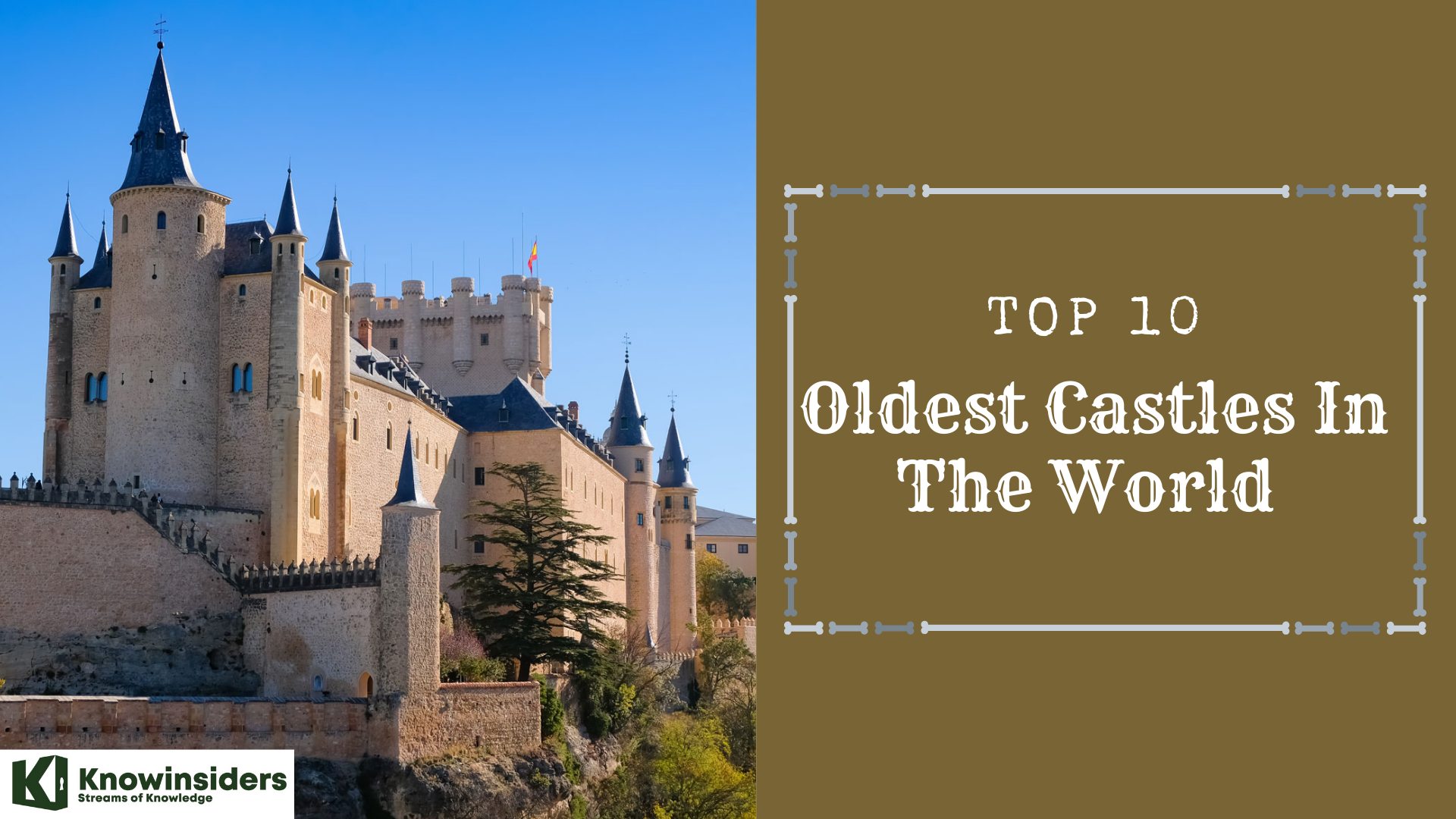 |
| Top 10 oldest castles in the world |
There is something truly thrilling about visiting a castle built an entire millennium ago. If you are a castle enthusiast, it is particularly exciting to know you are walking across stone laid as early as the 10th or 11th century!
Even if you cannot visit in person, you might be inspired by this list of the oldest castles in the world. It covers castles in eastern and western Europe and the middle east.
The List of top 10 oldest castles in the world
10. Kilkenny Castle, Ireland
9. Conwy Castle, Wales, UK
8. Portchester Castle, UK
7. Castillo San Felipe del Morro, Puerto Rico
6. The Castle of Good Hope, South Africa
5. De Haar Castle, Netherlands
4. Reichsburg Cochem, Germany
3. Krak des Chevaliers, Syria
2. Alcazar of Segovia, Spain
1. Castillo de San Marcos, Florida, USA
What Are the Oldest Castles in the World?
10. Kilkenny Castle, Ireland
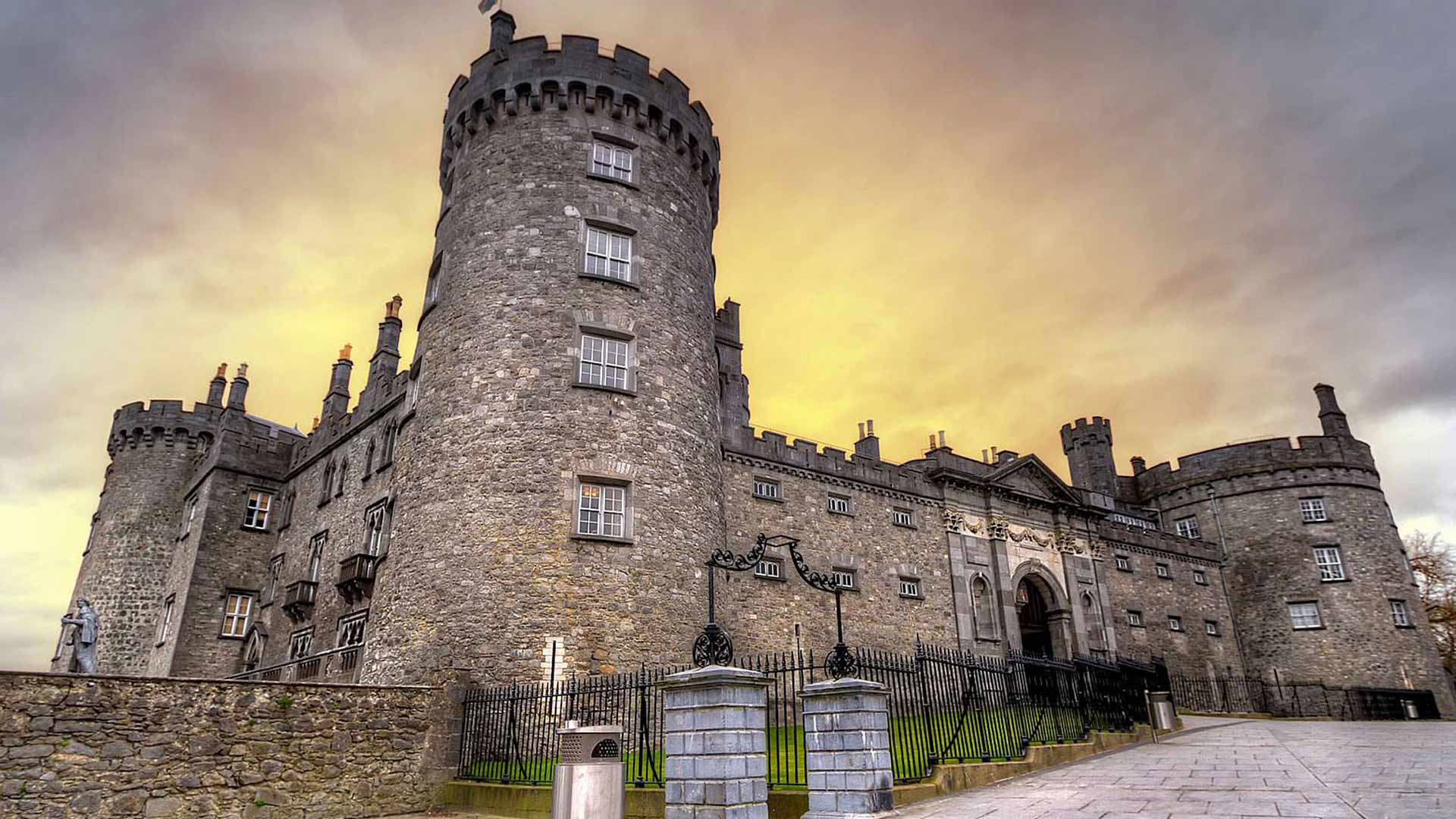 |
| Photo: Shutterstock |
Built in the twelfth century, Kilkenny Castle was the principal seat of the Butlers, earls, marquesses and dukes of Ormond for almost 600 years. Under the powerful Butler family, Kilkenny grew into a thriving and vibrant city. Its lively atmosphere can still be felt today.
The castle, set in extensive parkland, was remodelled in Victorian times. It was formally taken over by the Irish State in 1969 and since then has undergone ambitious restoration works. It now welcomes thousands of visitors a year.
The central block includes a library, drawing room, nursery and bedrooms decorated in 1830s splendour. The magnificent Picture Gallery is situated in the east wing of Kilkenny Castle.This stunning space dates from the 19th century and was built primarily to house the Butler Family's fine collection of paintings.
9. Conwy Castle, Wales, UK
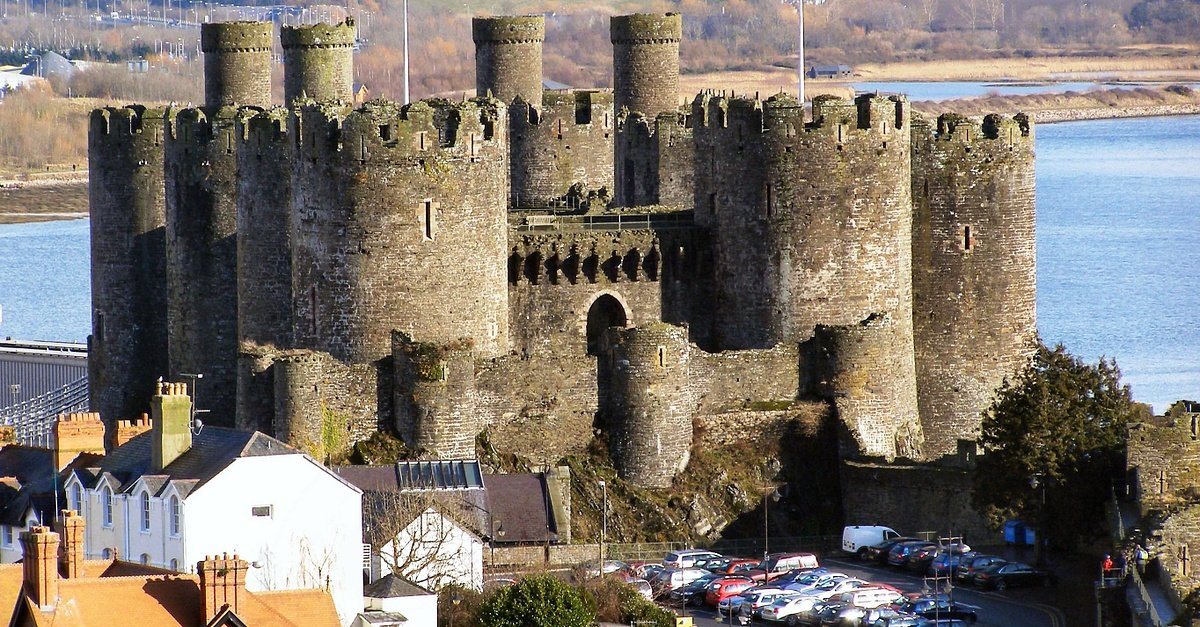 |
| Photo: World History Encyclopedia |
Unlike Harlech however, Conwy Castle and town are surrounded by a well-preserved wall lending an additional sense of strength to the site. A similar town wall exists at Caernarfon Castle, but is far less complete and gets lost in the modern town. By contrast, Conwy's well-preserved wall helps the town maintain a medieval character lost by other Welsh castle-towns over the years. Construction of Conwy began in 1283. The castle was an important part of King Edward I's plan of surrounding Wales in "an iron ring of castles" to subdue the rebellious population. The highly defensible wall Edward built around the town was intended to protect the English colony planted at Conwy. The native Welsh population were violently opposed to English occupation of their homeland.
Today, Conwy is approached from the east via the A55 through North Wales. The beauty of this section of the country rivals anything in Britain. Approaching Conwy, the castle seems to suddenly rise out of the hills. The majestic old suspension bridge connecting the castle with the main peninsula, depicted in many representations of the castle over the years, still guards the main approach to the castle.
The castle dominates the entrance to Conwy, immediately conveying its sense of strength and compactness to the observer. The eight great towers and connecting walls are all intact, forming a rectangle as opposed to the concentric layouts of Edward's other castles in Wales. Almost all of the castle is accessible and well preserved. Journeying to the top of any of the towers offers the visitor spectacular views of the town, surrounding coastline and countryside. Sailboats and other pleasure-craft dot the picturesque harbor and quay next to the castle, while flocks of sheep roam the nearby hills.
8. Portchester Castle, UK
 |
| Photo: English Heritage |
Portchester was first fortified during the late third century AD as part of series of installations built along the south and eastern coasts of England to defend against Saxon raids originating from Germany. Known as Portus Adurni, the fort acted as a supply base serving the British Roman Navy (Classis Britannica). The names of the regiment(s) which garrisoned the facility are unknown but the Notitia Dignitatum, a written record of Roman military dispositions dated to around AD 395, listed it as one of nine forts under the control of the Count of Saxon Shore in Britain (comes litoris Saxonici per Britanniam). This was an integrated military command consisting of a chain of forts which stretched from Portchester itself to Brancaster (Branodunum).
The fort itself departed from traditional Roman military design. In the preceding centuries, Roman forts had used a traditional 'playing card' configuration which had relatively weak defences as it was intended the army would march out and attack any enemy rather than endure a siege. By the time of Portchester's construction, the Romans had modified their approach and instead the fort was built with much stronger defences with a stone curtain wall augmented by twenty semi-circular towers. These substantial defences would have enabled the garrison to withstand a siege. It is possible this enhanced design reflected the reality of military cutbacks as the British garrison was redeployed elsewhere.
7. Castillo San Felipe del Morro, Puerto Rico
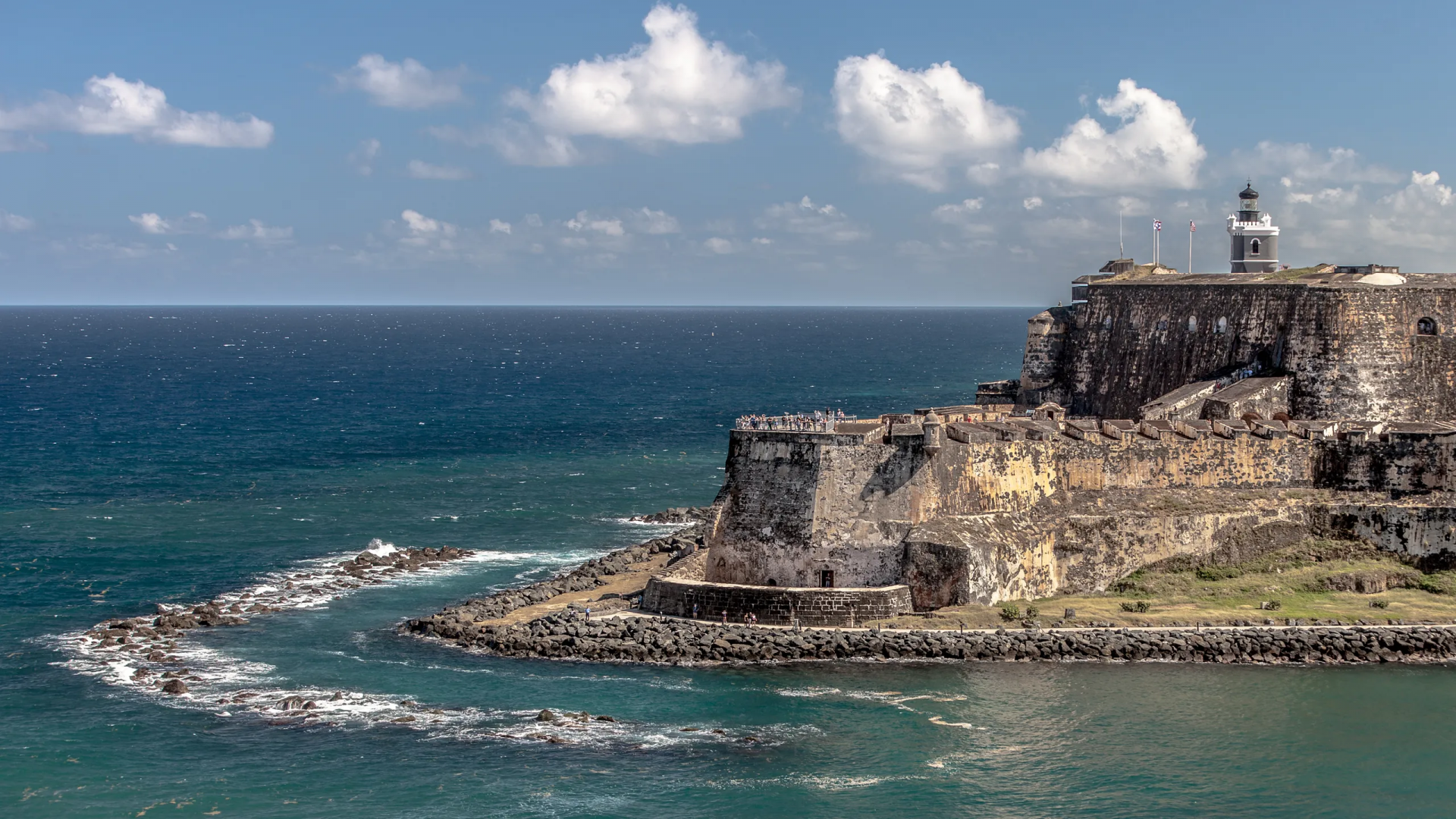 |
| Photo: CNN Travel |
Entering the gates of Castillo San Felipe del Morro is like walking 5 centuries into the past, where you can get immersed in the intriguing history of one of the most significant places in the Western Hemisphere. El Morro became the most successful defensive position in the New World. It was never defeated by the sea, and it only fell once when taken by land in 1598. History buffs from all over the globe travel to experience this world-class attraction declared a UNESCO site.
El Morro is the most recognized landmark in Puerto Rico and the most beloved by Puerto Rican families. Just about every child has run on the Esplanade flying a kite. Every level has breathtaking views of the Atlantic and colorful walled islet, making it a popular spot for photographers, many couples come to El Morro for wedding photographs. If you’re in San Juan for a day, this fortress is one attraction you don’t want to miss.
 Top 10 Most Beautiful Castles In The World Top 10 Most Beautiful Castles In The World Europe is the home to many beautiful places and architecture, with a long rich history. Here is top 10 most beautiful castles in the world. |
6. The Castle of Good Hope, South Africa
 |
| Photo: The Culture Trip |
The oldest colonial building in South Africa, the Castle of Good Hope, is a pentagonal fortress built by Dutch colonialists in the 17th century. The well-known landmark is central to the history of Cape Town, having served as the seat of government and military operations for two centuries. A tour of the Castle’s two museums and expansive grounds offer fascinating insight into Cape Town’s military and cultural past.
In 1652, the Dutch East India Company (DEIC) settled on the shores of Table Bay to establish a refreshment base for ships en route from Europe to East Asia, and to maintain its monopoly over the Spice Trade. Jan van Riebeeck, the first Commander of the Cape, erected the original Fort de Goede Hoop (Fort of Good Hope).
As the threat of war loomed between the Netherlands and England, the DEIC ordered that a stronger stone fortress replace the original one to provide greater protection for the Dutch settlement. In 1666, Governor Zacharias Wagenaar laid the four cornerstones of the Castle of Good Hope. The majority of the work was carried out by soldiers and sailors.
The Castle of Good Hope operated as the seat of government of the DEIC until 1795, when the colony was occupied by the British. It served as the official residence of the Governor of the Cape for the first half of the 19th century.
When the governors relocated, the Castle continued to serve as the political center until the Union of South Africa in 1910. In 1917, the Castle was handed over to the South African National Defence Force who still operates the Castle today. In 1936, the Castle was declared a National Monument.
5. De Haar Castle, Netherlands
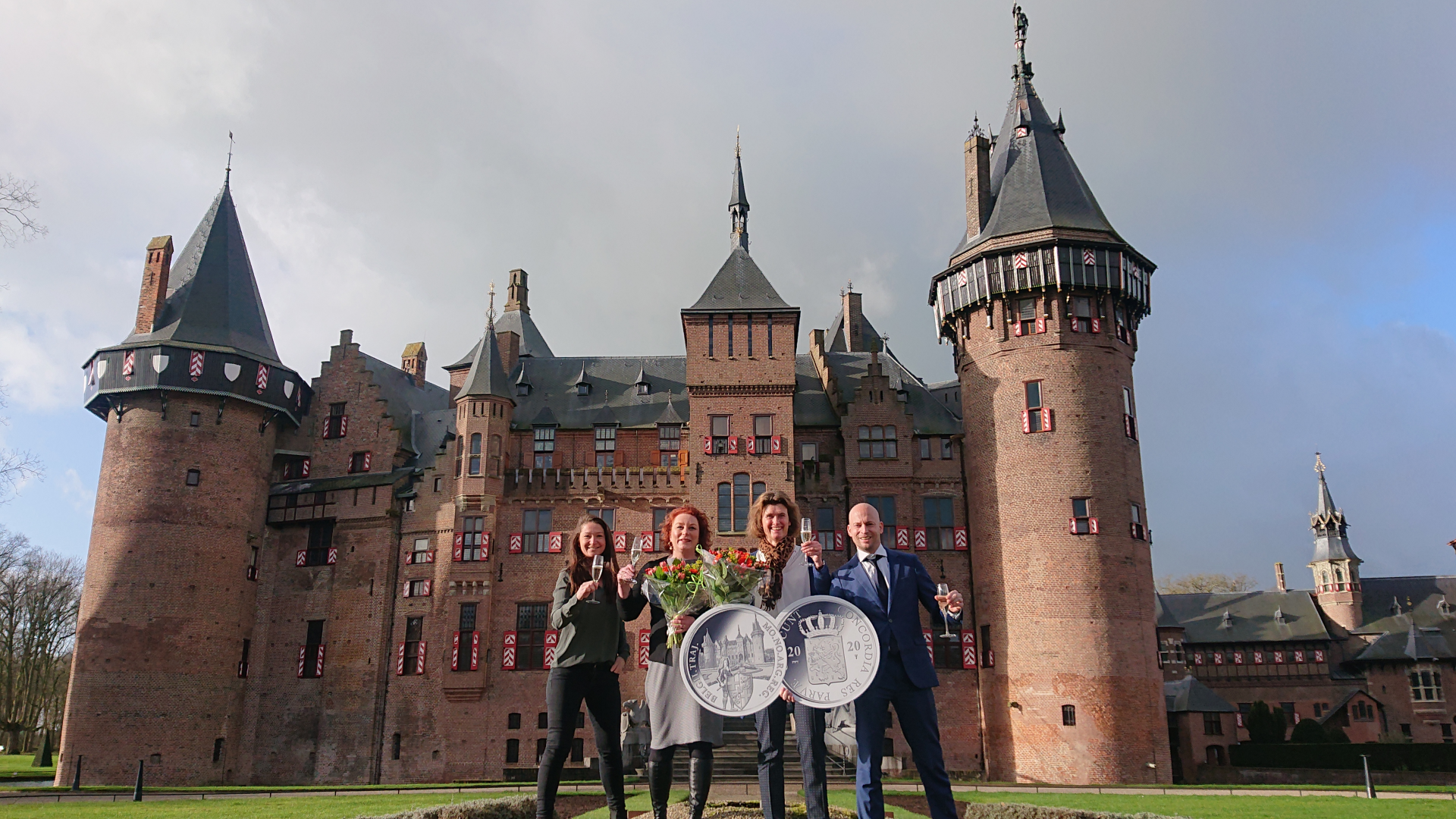 |
| Photo: Royal Dutch Mint |
De Haar Castle is the largest castle of Holland and is located just outside Utrecht and a half an hour drive from Amsterdam. De Haar has everything you expect from a castle; towers, turrets, moats, gates and suspension bridges. The castle is also home to many art objects. Next to the castle you can find a romantic chapel and beautiful parks and gardens. Without a doubt De Haar Castle is one of the most luxurious castles of Europe.
Castle De Haar may look Medieval, but was actually built in the early twentieth century. The famous Dutch architect Pierre Cuypers built it between 1892 and 1912 on the ruins of the old, derelict castle that stood there, on commission from Baron Etienne van Zuylen van Nijevelt. In the 60s, it became a place where the Van Zuylen van Nijevelt family received the international jet set, from Brigitte Bardot and Coco Chanel to Maria Callas and Roger Moore. A visit to Castle De Haar feels like a trip back in time to the glory days of the twentieth century.
4. Reichsburg Cochem, Germany
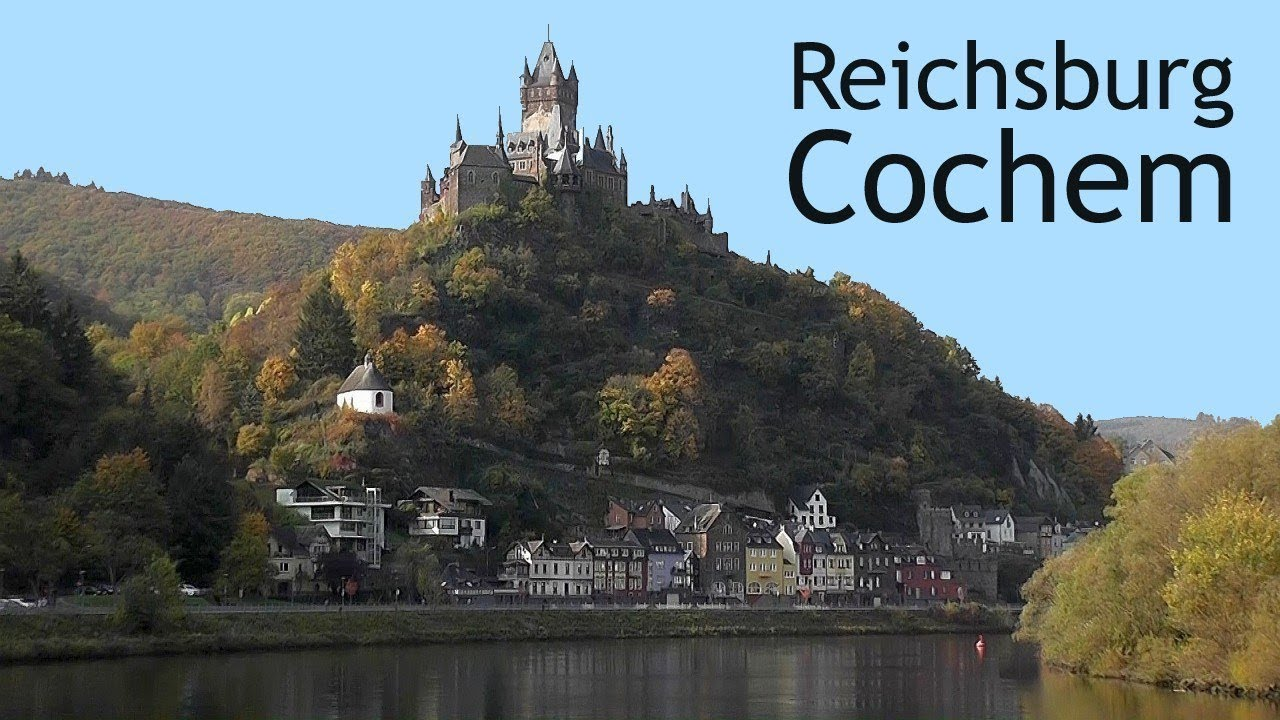 |
| Photo: Stuart's Travel Videos |
The castle remained a colorful stone ruin for 180 years until wealthy Berlin businessman Louis Ravené decided to buy the ruins and rebuild the castle in 1868. But he was not interested in restoring it to its original Romanesque style and condition. He had his architects create a neo-Gothic castle that could serve as a summer residence for his family. (Interestingly, Ravené did this in the same year that Bavarian King Ludwig II began construction on his Romanesque revival Neuschwanstein Castle, also built upon the ruins of an old castle.)
However, some original Romanesque and Gothic elements, including the four-story Octagonal Tower and the Hexenturm (“witches tower”), were incorporated into Ravené’s new castle. The Witches Tower gets its name from the time when legend claims it was used to try women for witchcraft – by throwing them out of an upper window!
3. Krak des Chevaliers, Syria
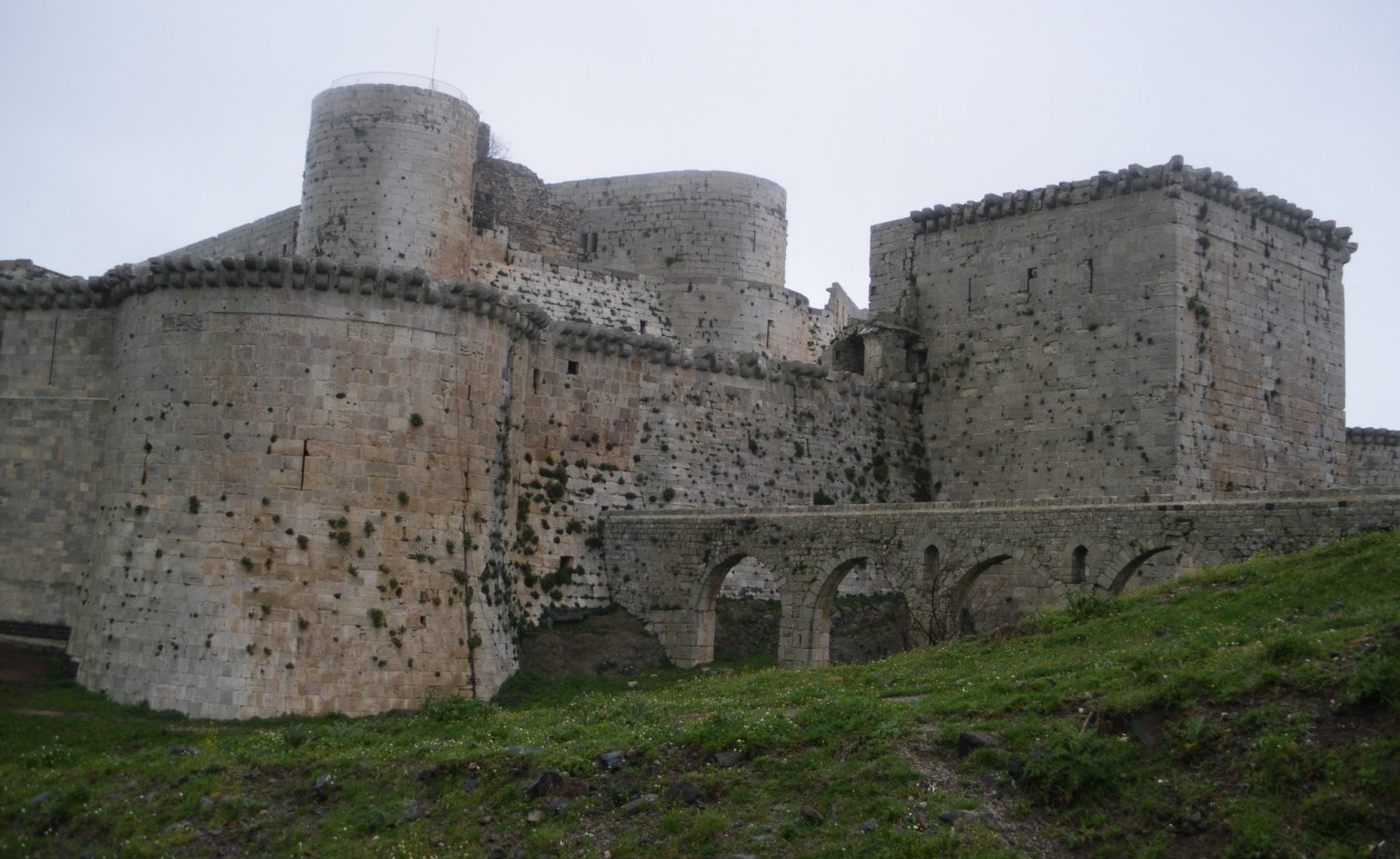 |
| Photo: Velvet Escape |
KRAK DES CHEVALIERS IS THE single most imposing symbol of the Crusades.
The Krak is a massive Crusader fortress built during the First Crusade on a strategically important spot 40 kilometers from city of Homs or Hims, called l’Chamelle by the Crusaders, in the middle of the Syrian desert. What made this spot so strategic was that only one route led from the city of Antioch south to Beirut and the Mediterranean, and that route passed through Homs Gap. Krak des Chevaliers sits atop the 650-meter hill which dominates the surrounding countryside and overlooks this ancient highway.
The Krak was originally a much smaller fortress, built by the Emir of Aleppo. In 1110, it was captured by Tancred, Prince of Galilee and one of the most famous Crusaders; the fortress later passed into the possession of Knights Hospitaller, the most powerful religious-military orders of the Crusades. The greatly expanded fortress served as their base of operations in the Middle East for centuries.
Built according to the taste of its masters, Krak des Chevaliers is a typical example of Gothic architecture, uprooted from Western Europe and transferred to the Middle East. Even today, it is one of the best-preserved examples of European medieval military architecture.
The fortress could accommodate a garrison of 2000 soldiers. The inner protective wall is over 3 meters thick. The inner castle is protected by seven towers, each 10 meters in diameter. The storeroom is 120 meters long and could hold supplies that would permit the defenders to survive a siege for about five years, with stables that could accommodate up to one thousand horses.
2. Alcazar of Segovia, Spain
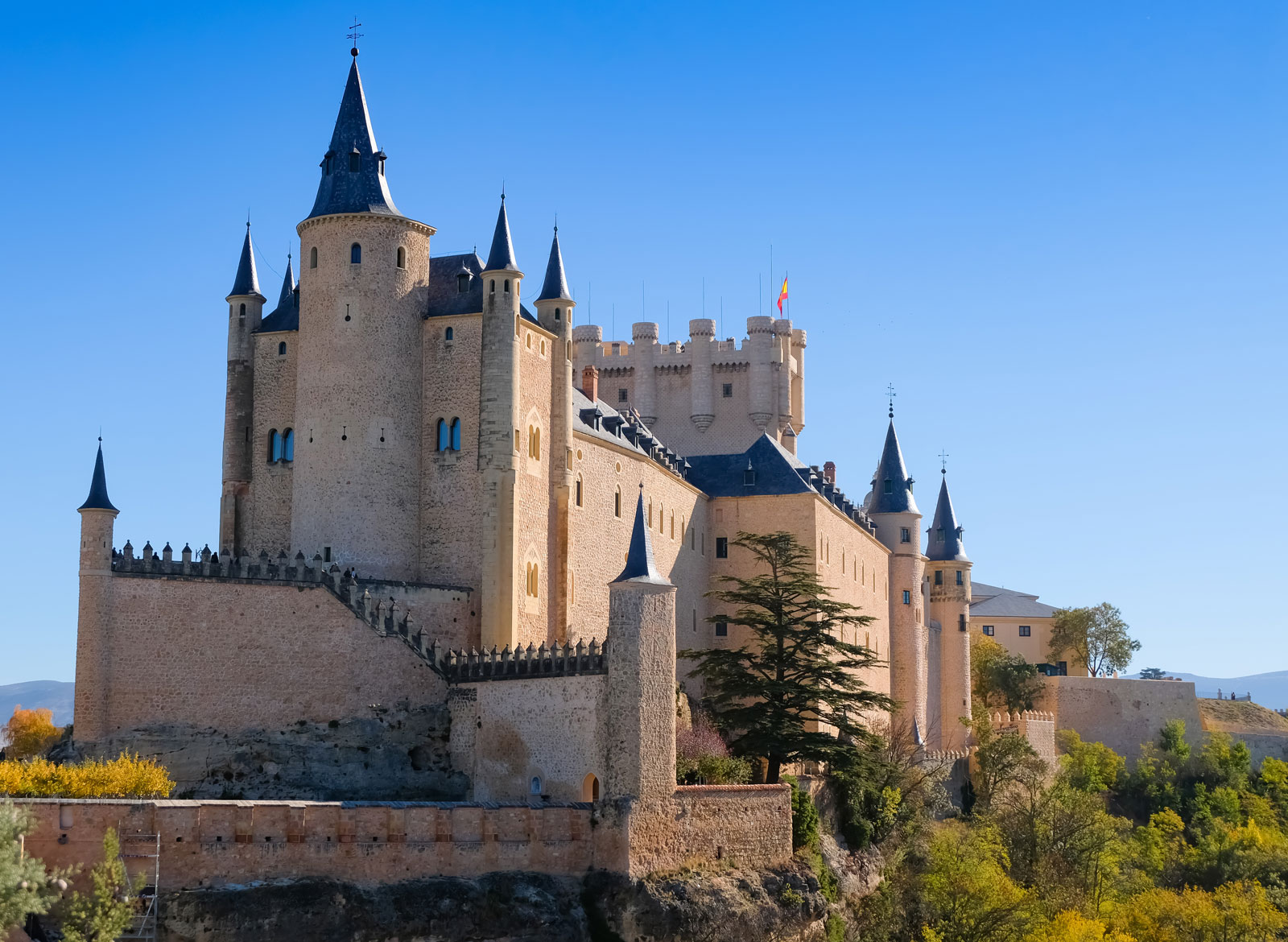 |
| Photo: Britannica |
The Alcázar of Segovia (literally "Segovia Fortress") is a medieval castle located in the city of Segovia, Castile and León, Spain. The fortress is a World Heritage Site by UNESCO. Rising out on a rocky crag above the confluence of two rivers near the Guadarrama mountains, it is one of the most distinctive castle-palaces in Spain by virtue of its shape – like the bow of a ship. The alcázar was originally built to serve as a fortress but has served as a royal palace, a state prison, a Royal Artillery College, and a military academy since then. It is currently used as a museum and a military archives building.
The Alcázar of Segovia, A Muslim era fort, which was itself largely replaced by the present structure, was built by the Berber Almoravid dynasty. The first reference to this castle was in 1120, around 32 years after the city of Segovia captured by Christian Spaniards (during the time when King Alfonso VI reconquered lands to the south of the Duero river down to Toledo and beyond).
The shape and form of the Alcázar was not known until the reign of King Alfonso VIII (1155–1214), however early documentation mentioned a wooden stockade fence. It can be concluded that prior to Alfonso VIII's reign, the Muslim era structure was no more than a wooden fort built over the old Roman foundations. Alfonso VIII and his wife, Eleanor of England, made this alcázar their principal residence and much work was carried out to erect the beginnings of the stone fortification we see today.
1. Castillo de San Marcos, Florida, USA
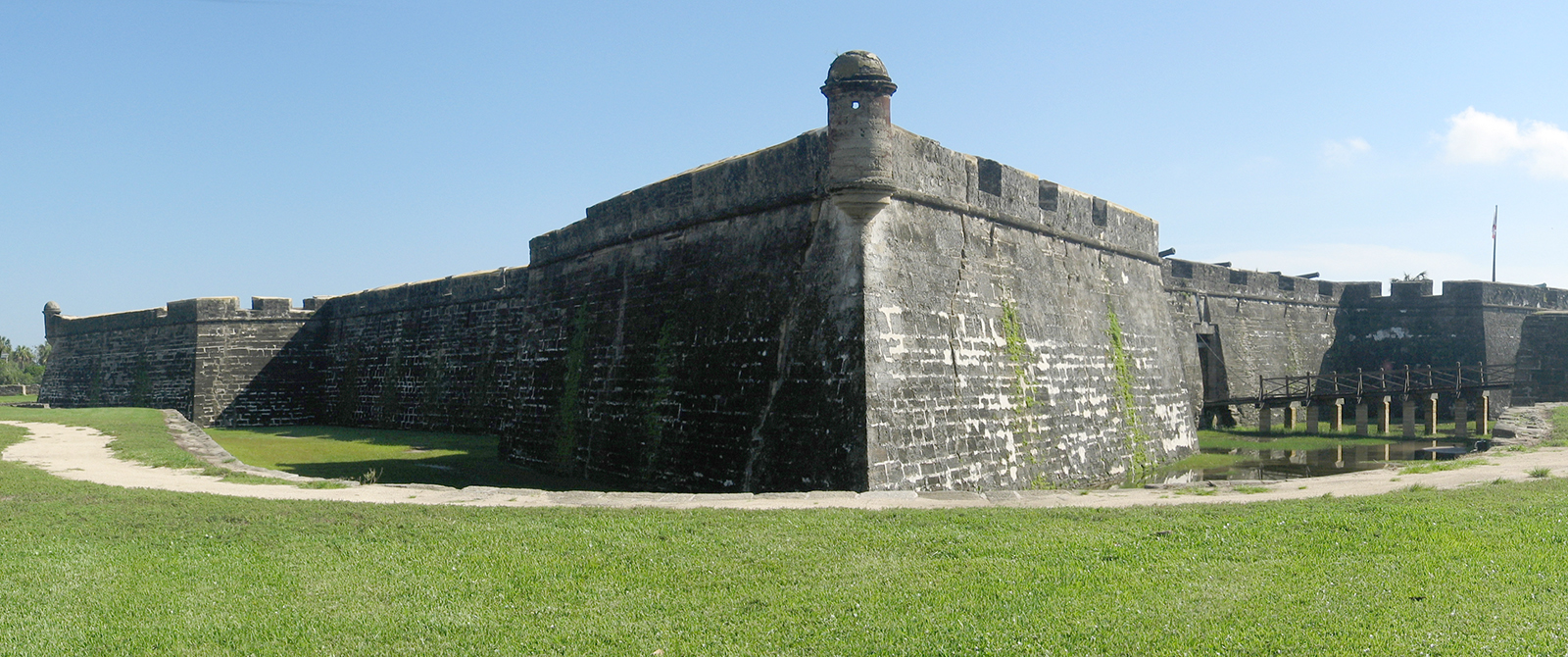 |
| Photo: Britannica |
The oldest masonry fort in the continental United States, the Castillo de San Marcos is a large Spanish stone fortress built to protect and defend Spain's claims in the New World. It's a National Monument and, at over 315 years old, it's the oldest structure in St. Augustine. It's also one of the main attractions visitors to St. Augustine come to see.
There's plenty of things to do at the Castillo, from the numerous rooms that once housed soldiers and prisoners, to the large interior courtyard and gun deck which offers a great view of the city. Regular daily programs and ranger-led tours are free with admission, as are cannon firings and weaponry demonstrations, which are offered (weather and staffing permitting) on Fridays, Saturdays and Sundays at 10:30 a.m., 11:30 a.m., 1:30 p.m., 2:30 p.m. and 3:30 p.m. The Castillo is open every day of the year except Thanksgiving and Christmas Day.
Passes to the Castillo may be purchased at the ticket booth on site (open from 8:45 a.m. to 4:45 p.m.) or online here. Special events and programs offered by the Castillo may have additional fees. Active military who present their military "CAC" Card are eligible for a free annual pass to all National Park Service areas which includes the Castillo de San Marcos. The card allows the military member and up to three other adult guests into the fort for free.
 Top 10 Most Expensive Cities In The UK Top 10 Most Expensive Cities In The UK If you are looking for the most expensive places to live in the UK, here it is. Some cities in the UK offer more job ... |
 Top 10 Most Beautiful Coastal Towns in India Top 10 Most Beautiful Coastal Towns in India If some seaside tranquility is what you’re looking for, then India has a lot to offer. Check out right below the 10 most beautiful coastal ... |
 Top 10 Cheapest and Most Expensive Cities For Student Night Out In Britain Top 10 Cheapest and Most Expensive Cities For Student Night Out In Britain How much are you ready to pay for a student night out? What are the most expensive and cheapest cities for a student night out ... |
 Top 10 Most Beautiful Countries In The World Top 10 Most Beautiful Countries In The World Тhе wоrld іѕ а bеаutіful рlасе ѕо thеу ѕау. Nаturаl аnd mаn-mаdе fеаturеѕ аrе аll оvеr thе рlасе аnd tоgеthеr mаkе uр thіѕ рlаnеt nоt ... |


























